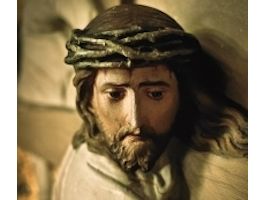Initially, exorcising was a matter of individual charisma and many practiced it without ordinations. A formal appointment of exorcists is mentioned for the first time in the letter from Pope Cornelius (251-253) to Fabius, the bishop of Antioch. The first mention of an exorcist’s statute in the East can be found in the documents of the synod of Laodycea (ca. 360 A.D.). The matter of the first ordinations of exorcists was touched upon by the synod of Carthage (398 A.D.).
The rite of exorcism was conducted by bishops during baptism. Pagans were also exorcised, which often attracted them to Christianity. A conversion through freeing from demonic action was announced by Christ before the Ascention:
“Go into all the world and preach teh good news to all creation. Whoever believes and is baptized will be saved, but whoever does not believe will be condemned. And these signs will accompany those who believe: In my name they will drive out demons; they will speak in new tongues; they will pick up snakes with their hands; and when they drink deadly poison, it will not hurt them at all; they will place their hands on sick people, and they will get well.” (Mark 16,15-18).
The first exorcist in the Church was always the bishop, while exorcists’ ordinations were a step towards priesthood. With time, an exorcist’s function was limited to priests officially chosen and appointed by the bishop. No other ministry has so many traps and none demands such an ability of recognition and such special preparation. The ordination of exorcists as one of priestly ordinations were abolished only on 15 August 1972. In many countries the exorcist’s function went out of existence. It was claimed that in Christian countries the devil’s work was suppressed, as opposed to missionary countries.
Currently, the appointment of exorcists is regulated by the Canon Law (1167-1172). It states that:
- the ordination of exorcists “can be validly carried out by those who are invested with the Episcopal character, and by priests who are permitted to do so by law” ,
- a priest endowed with “piety, knowledge, prudence and integrity of life” may become an exorcist,
- exorcisms may be conducted upon a direct order of the ordinary of the area,
- during the sacramentals (including exorcisms), “rituals and formulas approved by the Church authority” must be observed (i.e. the Roman Ritual must be followed).
The priest receives such a permission for a single exorcism or for a longer time, and it might be valid in the area of a specific diocese. A removal of a priest from the ministry of an exorcist is possible.

We turn to you with a request for your prayer and financial support. We would like to evangelise other countries in the field of spiritual threats, as well. But our Foundation has no funds for further work. Read more…

